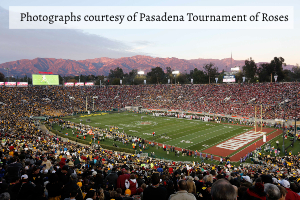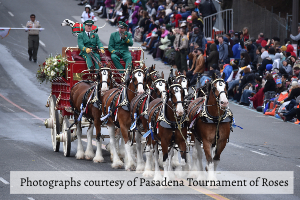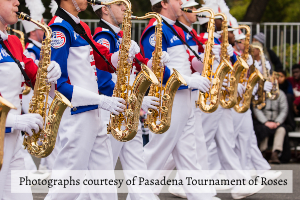Tournament of Roses
America’s New Year Celebration
The Tournament of Roses, or the Rose Parade, is part of America’s New Year Celebration, an annual celebration held in Pasadena, California on New Year’s Day. Since the first Rose Parade on January 1, 1890, the parade has been broadcasted on multiple television networks and is followed by the Rose Bowl college football game. Both the Rose Parade and the Rose Bowl are organized by the Pasadena Tournament of Roses Association, which has been run by David Eads as executive director and CEO since February 2017. Eads has attended every Rose Parade and Rose Bowl Game since moving to Southern California in 2000. Tokyo Journal Executive Editor Anthony Al-Jamie sat down with Eads to talk about the Rose Parade.

TJ: How would you describe the Rose Parade to someone who has never seen it before?
EADS: The Rose Parade is America’s New Year celebration. It is probably the world’s largest floral-floats parade that captures the essence of the new year — celebrating open joy that is captured through floral floats, marching bands from across the country and the world, and a variety of equestrian units.
TJ: What do you think sets the Rose Parade apart from other parades?
EADS: There is no other parade that does what we do. We have a 130-year history of building these beautiful floral floats that incorporate creativity, artistry and technology, through the use of hydraulics, animation, pyrotechnics and special effects. All those things result in floats that are just spectacular. And that is why over 40 million people in the United States alone view the parade every New Year’s Day, because there is nothing else like it.

TJ: What have been the biggest changes over the years?
EADS: If you look back 130 years, there were carriages that were decorated with flowers. At the advent of the car, it became the automobiles that were decorated, and it moved onto larger floats in the twenties and thirties. Obviously after the war, engineering and technical expertise made them bigger and better. Over the years, technology has been used to enhance the floats, but they’ve never lost their original character of being covered with beautiful flowers and their organic materials.
TJ: If someone was coming from Japan, how would he or she get tickets to the parade?
EADS: We have grand stand seating that are reserved ticketed seats, and the tickets can be purchased through Sharpseating.com or if they just want to stand along the parade route, no tickets are required. It is open to all. All along the parade route people can just line Colorado Blvd. and watch the parade as well.

TJ: Can spectators come and view the process of building floats?
EADS: Yes. We have an event called “Decorating Places”. What the public will be able to see is the thousands of volunteers assembled that are actually putting together the floral pieces on all the floats. It’s a really great activity for families to be part of the parade by seeing how the floats come together.
TJ: What about after the parade? Are people still able to view the floats?
EADS: Yes. After the parade in the afternoon of January 1 and all-day January 2, we have Post Parade. All the floats are on display, so they are stationary. Some of them will have their hydraulics and their animation working. It is really a festival atmosphere; people can come out and really get a close-hand look at how these floats are built and all the colors and smells that emanate from them. tj
The complete article can be found in Issue #279 of the Tokyo Journal.




























